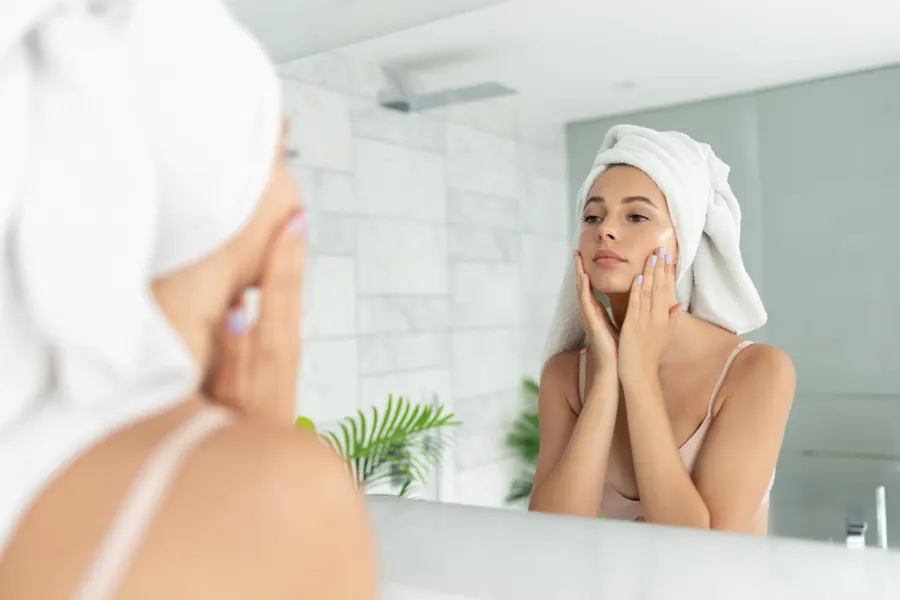Remember the before times? The ritual of a full face of makeup just to sit at a desk? The crowded beauty counters where you’d test a dozen foundations? Yeah, that feels like a distant memory now. The pandemic didn’t just pause our routines; it fundamentally rewired our entire relationship with beauty. And honestly? A lot of those changes are here to stay.
We’re not just talking about a temporary switch from lipstick to lip balm. This is a deep, structural shift in values. It’s a move away from performance and perfection and toward something far more personal, more holistic. Let’s dive into the lasting consumer behavior changes that are reshaping the beauty landscape for good.
The Great Unmasking: Skin First, Makeup Second
With half our faces hidden behind masks for two years, the focus shifted—dramatically. Why bother with a bold lip if no one could see it? This wasn’t a rejection of color, but a massive re-prioritization. Our attention—and our spending—zoomed in on the skin.
Skincare became the main event. Consumers became ingredient detectives, obsessing over hyaluronic acid, niacinamide, and retinoids. They invested in high-tech tools like LED masks and microcurrent devices, turning their bathrooms into mini dermatology clinics. The goal shifted from covering up to building up—creating healthy, resilient skin that could stand on its own.
And this “skinification” of everything has bled into makeup, too. You see it in the products that dominate the market now: tinted serums, skin tints, and cream blushes. Makeup that enhances rather than conceals. It’s a philosophy, not just a product. The finish is dewy, natural, real. It’s makeup that looks like you’re not wearing makeup, which is, ironically, the highest compliment now.
Radical Authenticity and the “No-BS” Consumer
Lockdowns gave us time to think. To research. To scroll… deeply. And we became savvier, more skeptical shoppers. The old marketing playbook of airbrushed models and miracle claims? It just doesn’t work on the post-pandemic consumer.
We crave realness. We want to see unfiltered reviews, real people with pores, and transparent ingredient lists. Brands that try to hide behind glossy veneers get called out instantly. This demand for authenticity is a direct result of having too much time online—we’ve become experts at spotting a facade.
This has also fueled the rise of dermatologists and estheticians on social media. We trust experts who break down the science, not influencers who just parrot a brand’s talking points. It’s a move toward educated, evidence-based purchasing. You know, we want to know why something works, not just be told that it does.
Wellness is the New Wow-Factor
Beauty isn’t a separate category anymore. It’s completely intertwined with overall wellness. The line between a supplement, a skincare product, and a mood booster is blurrier than ever. Stress directly impacted our skin—hello, “maskne”—and we made the connection between internal health and external glow.
This has created a massive boom in:
- Adaptogenic beauty: Products infused with ashwagandha, reishi, and other herbs meant to help the skin—and the body—manage stress.
- Blue light protection: A direct response to our skyrocketing screen time.
- Fragrance as therapy: Scents are chosen for their ability to calm or energize, not just smell nice.
The ritual of applying products became a form of self-care. That five minutes massaging your face isn’t just about absorption; it’s a mindful pause in a chaotic day. Beauty is a verb now, an act of nurturing.
The Digital-First, Hybrid Shopping Experience
Sure, we’re going back to stores. But how we shop is permanently altered. The initial panic-buying online evolved into a genuine comfort with—and expectation for—sophisticated digital tools.
Augmented reality (AR) try-on features, once a nifty gimmick, became essential for color matching a foundation without a tester. Virtual consultations with brand experts bridged the gap when we couldn’t get to a counter. We got used to the convenience.
But here’s the twist: the store isn’t dead. It’s been reinvented. It’s now a place for experience and connection. We might research online, but we go in-store for a masterclass, to touch a texture, or to get a personalized skincare analysis. The winning brands are those that seamlessly blend these two worlds into a single, fluid customer journey.
The Values-Led Purchase: Conscious Beauty is Non-Negotiable
Perhaps the most profound shift is in our conscience. The pandemic made us acutely aware of our global interconnectedness and fragility. This translated into a demand for brands that do good—for people and the planet.
It’s not a niche concern anymore; it’s mainstream expectation. Consumers are actively looking for:
- Sustainability: Refillable packaging, recycled materials, and waterless formulas.
- Transparent Supply Chains: Knowing where ingredients come from and how workers are treated.
- Inclusive Representation: A real commitment to shade ranges, gender-neutral marketing, and featuring models of all ages, abilities, and sizes.
Empty gestures or “woke-washing” are quickly identified and rejected. Authentic action is the only currency that matters. We’re voting with our wallets for the world we want to see.
So, What Does This All Add Up To?
In the end, it boils down to a single, powerful idea: beauty as self-expression, not conformity. The pandemic forced us to look in the mirror—literally and figuratively—and decide what truly mattered to us. The result is a consumer who is more informed, more intentional, and more invested in a holistic vision of beauty that includes their well-being, their values, and their unique identity.
The trends of maximalism and minimalism will ebb and flow. But the core demands—for transparency, for efficacy, for purpose—those are the new foundations. The beauty industry isn’t going back to 2019. And honestly, that’s probably a beautiful thing.













